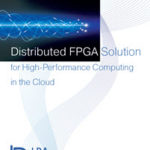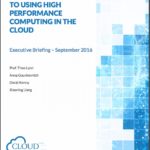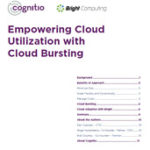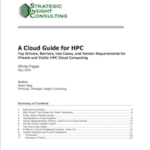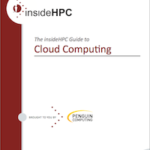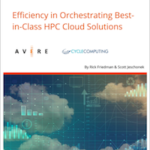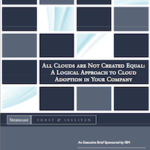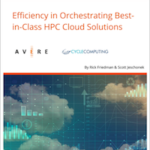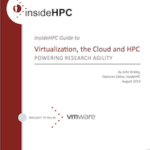A parallel file system offers several advantages over a single direct attached file system. By using fast, scalable, external disk systems with massively parallel access to data, researchers can perform analysis against much larger datasets than they can by batching large datasets through memory. To Learn More about the Parallel File Systems download this guide
Distributed FPGAs Solution for High-Performance Computing in the Cloud
FPGAs are firmly represented in data centers: they perform various computational and acceleration tasks that will only increase in the complexity along with the advancement of technology. Similarly, the number of FPGAs in data centers is growing on a daily basis and will continue to do so, especially considering recent developments introduced by big players, […]
Empowering Cloud Computing Utilization with Cloud Bursting
Cloud computing is a pervasive technological trend that has penetrated nearly every commercial and government market over the past several years. The cloud
computing paradigm treats IT services as a commodity, focusing on providing ubiquitous access to shared computational and storage resources, and leveraging
economies of scale to achieve lower variable costs. Download this white paper to learn more.
Cloud Guide for HPC Computing
This white paper presents an evolutionary approach to cloud computing within a high-performance computing (HPC) context. The paper addresses the seamless and incremental process of moving from private/internal to public/external clouds, the realistic use cases, and the qualities needed in a vendor to get you there. This paper also compares several public cloud offerings and profiles a vendor who is enabling a range of cloud solutions for leading Fortune 500 companies.
Cloud Computing Guide
IT organizations are facing increasing pressure to deliver critical services to their users while their budgets are either reduced or maintained at current levels. New technologies have the potential to deliver industry-changing information to users who need data in real time, but only if the IT infrastructure is designed and implemented to do so. While computing power continues to decline in cost, the management of large data centers, together with the associated costs of running these data centers, increases. The server administration over the life of the computer asset will consume about 75 percent of the total cost.
Cloud Solutions for HPC Efficiency
This white paper reviews common HPC-environment challenges and outlines solutions that can help IT professionals deliver best-in-class HPC cloud solutions—without undue stress and organizational chaos.
Cloud Adoption in Your Community
In conference rooms worldwide, enterprise IT departments are evaluating entry into ‘the cloud’. Armed with media reports and marketing materials, they are considering questions like, “Is the cloud appropriate for critical workloads? Will the cloud really save time and money? Does the cloud pose a security risk?”
There’s only one problem with such due diligence: there’s no such thing as ‘the cloud’. Instead, there are multiple clouds, with different configurations, offered by different providers and representing different degrees of benefit and risk.
Best-in-Class HPC Cloud Solutions
This white paper reviews common HPC-environment challenges and outlines solutions that can help IT professionals deliver best-in-class HPC cloud solutions—without undue stress and organizational chaos.
Virtualization, the Cloud and HPC
Hardware virtualization refers to the creation of a number of self-contained virtual servers that are resident on the physical server, or host machine. This allows multiple applications to be run on the same machine while providing security and fault isolation. Typically an administrator decides how much of each resource — CPU, memory, net- working — to allocate to the virtual machine (VM), while assigning priorities to different classes of users. The virtual infrastructure dynamically enforces these policies to ensure that each VM gets its fair share of resources.


